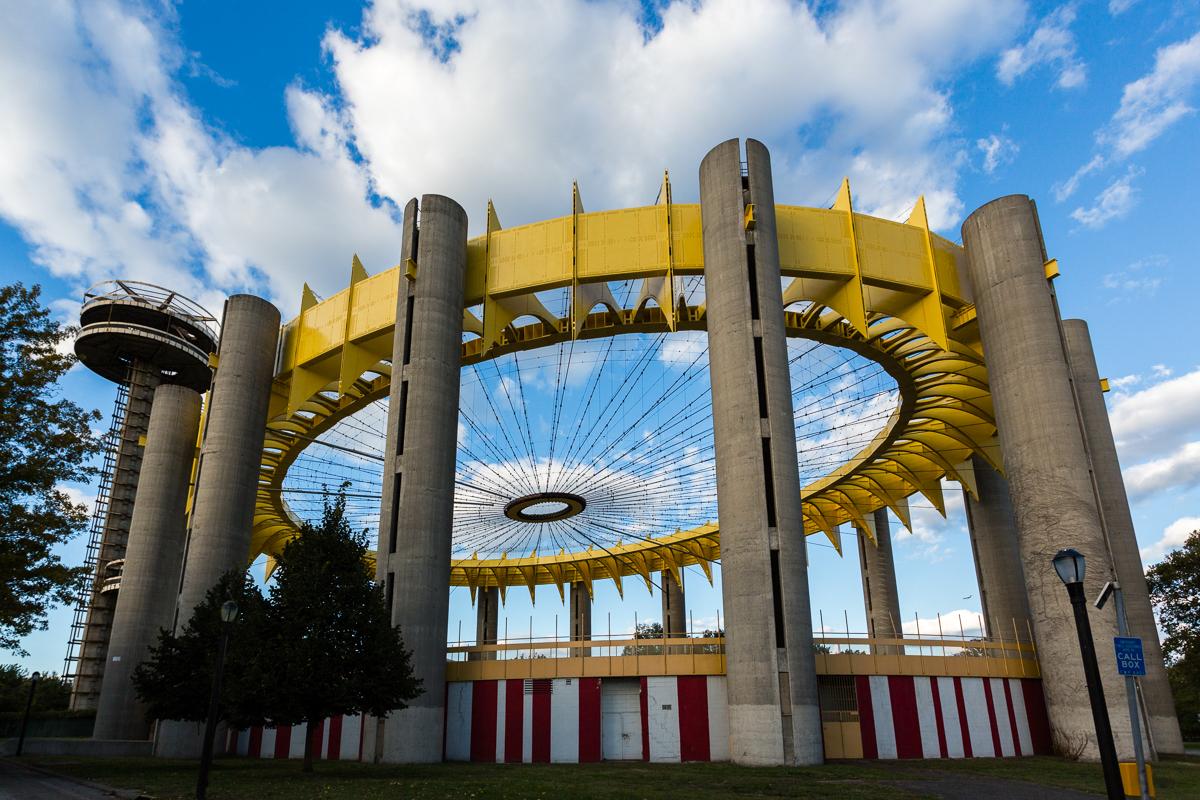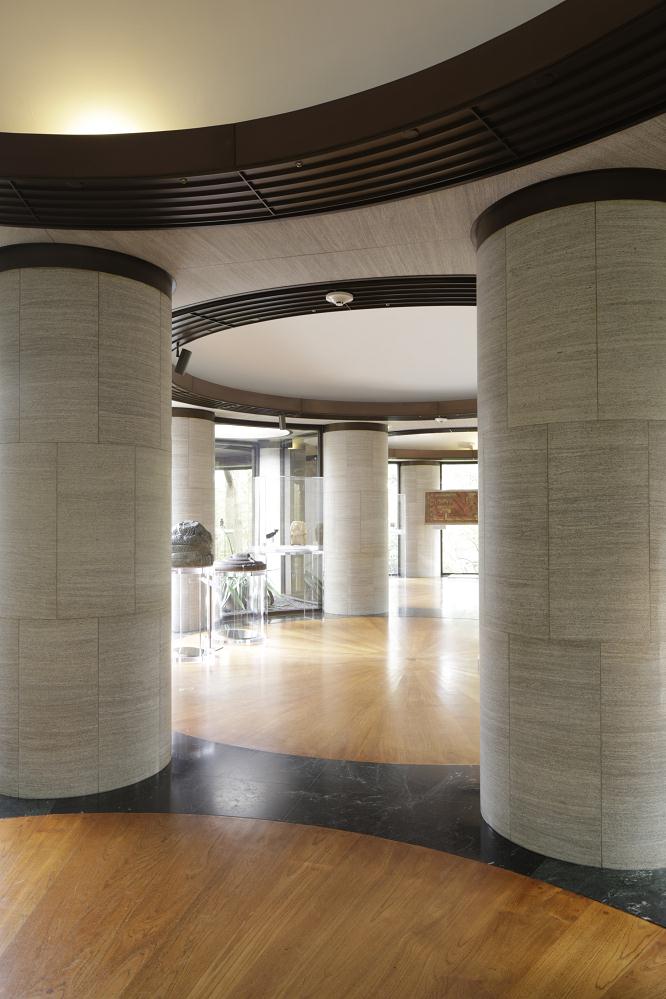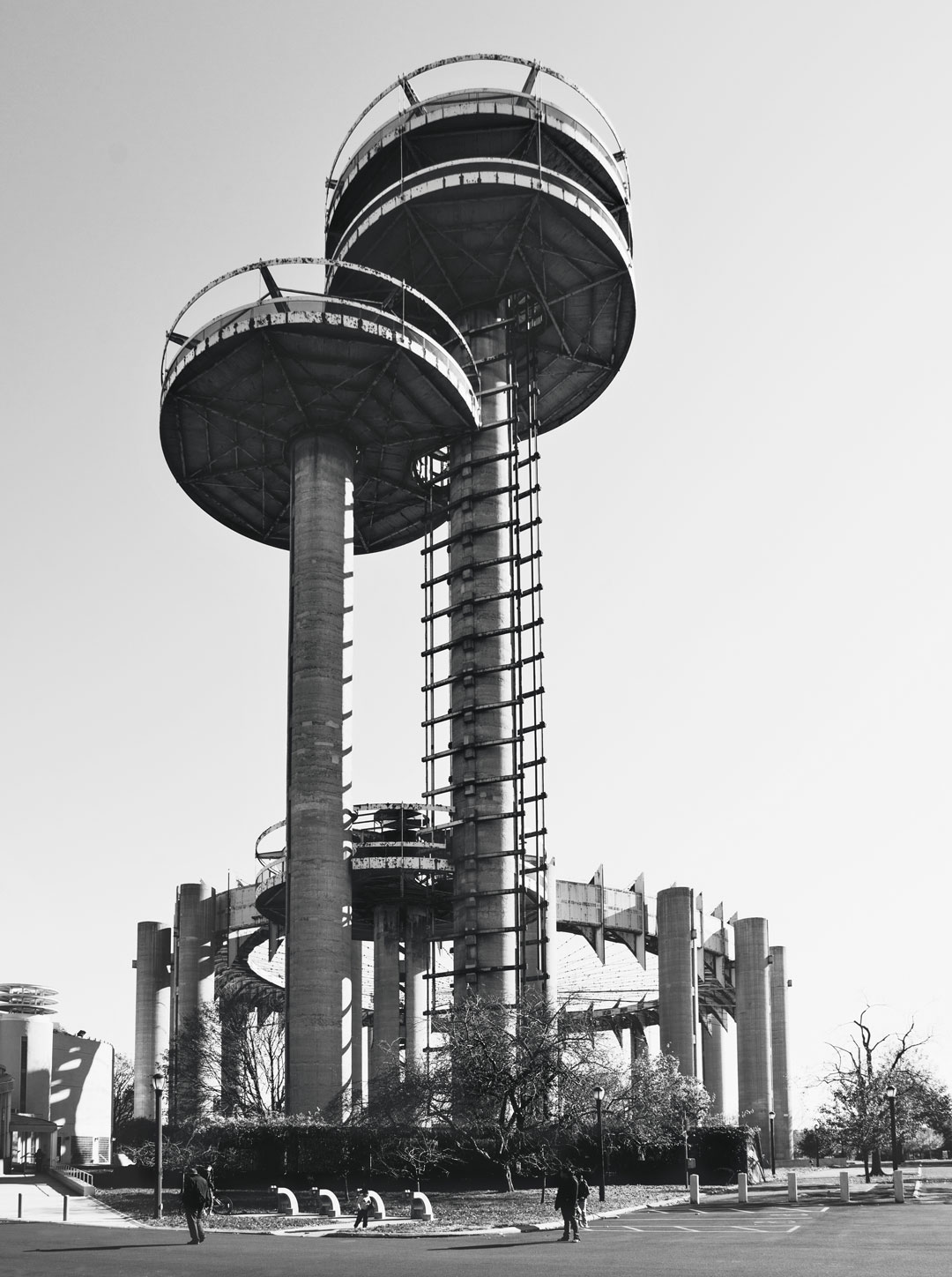
AD Classics New York State Pavillion / Philip Johnson Philip Johnson
Built by Philip Johnson in New York, United States with date 1964. Images by Flickr user Jason Paris. It is rare to find an architectural project whose history makes such strange bedfellows as the.

AD Classics New York State Pavilion / Philip Johnson Philip johnson
Walking tour with Philip Johnson, 1991 "I was so excited by [the arched structure in the bedroom of the Brick House] that my next building was heavily influenced by it and that's the Pavilion in the Pond, which, as you realize, is a false scale, about half to three-quarters - it doesn't make any difference.

Philip Johnson folly Philip johnson, Architectural inspiration, Pavilion
It was designed in 1962 for the 1964 New York World's Fair by architects Philip Johnson and Richard Foster, with structural engineer Lev Zetlin . Architecture Attractions and Geographical Features of Flushing Meadows-Corona Park [Interactive fullscreen map + nearby articles] view talk edit

AD Classics New York State Pavilion / Philip Johnson ArchDaily
Reserva Fácil, Rápida, Segura y Con Confirmación Inmediata. Encuentra lo Que Necesitas en Booking.com, la Web de Viajes Más Grande Del Mundo.

Important Inspiration Philip Johnson Architecture
Architect Philip Johnson designed the New York State Pavilion for the 1964-65 World's Fair, which drew an estimated 51 million visitors to Flushing Meadows-Corona Park for a celebration of culture, technology, and "man's achievement on a shrinking globe in an expanding universe."

Philip Johnson's Glass House informs pool pavilion in Canada Pool
Published on April 22, 2014. Share. Philip Johnson's "iconic" New York State Pavilion has been listed as a "National Treasure" by the National Trust for Historic Preservation. This.

Ideas competition for Philip Johnson's New York World Fair pavilion
New York State Governor Nelson Rockefeller commissioned architect Philip Johnson to design the New York State Pavilion, instructing him to design what would be the largest and tallest pavilion at the Fair.

philip johnson, pavilion Bing Images Philip johnson, Pavillion, New
A two-year refurb of Philip Johnson's World's Fair pavilion begins this month in New York, after $24m of funding was raised to restore the space age ruin.. The 1964 structure has long been closed and is in dire need of repair after years of neglect.

New York World’s Fair Philip Johnson Pavilion photo by Bob Borson
Architect Philip Johnson and artists Robert Indiana, Ellsworth Kelly, Robert Rauschenberg, and Andy Warhol are all associated with the New York State Pavilion, built for the 1964 New York World's Fair in Flushing Meadows-Corona Park. Warhol's work, 13 Most Wanted Men, sparked controversy before the Fair's opening in April 1964. Header Photo.

Phillilp Johnson The Lake Pavillion Architecture Project, Modern
Designed by architect Philip Johnson and constructed for the 1964-65 World's Fair, the complex has been shuttered for decades (except for the former Theaterama, which is now the Queens Theatre). A lighting revamp heightens its visibility.

Gallery of AD Classics New York State Pavilion / Philip Johnson 8
The Studio, a one-room workspace and library, was built in 1980 on the grounds of Philip Johnson's Glass House in New Canaan,. His firm's Pillars of Dreams pavilion in Charlotte, N.C., for.

Dumbarton Oaks PreColumbian pavilion, Philip Johnson / As early as
Philip Johnson, (born July 8, 1906, Cleveland, Ohio, U.S.—died January 25, 2005, New Canaan, Connecticut), American architect and critic known both for his promotion of the International Style and, later, for his role in defining postmodernist architecture. Ludwig Mies van der Rohe and Philip Johnson: Seagram Building

Gallery of AD Classics New York State Pavilion / Philip Johnson 17
Pavilion at Pavilion Kl up to 80% off with Agoda. Book Now! Pavilion at Pavilion Kuala Lumpur up to 80% off with Agoda. Book Now!

Philip Johnson Pavilion Dumberton Oaks
Philip Johnson's iconic New York State Pavilion opened to hundreds of visitors for its 50th anniversary. By Ian Volner Connie Zhou

AD Classics New York State Pavillion / Philip Johnson Philip johnson
Philip Johnson's iconic New York State Pavilion in Flushing Meadows-Corona Park was built for the 1964-65 World's Fair, but has struggled in recent decades to find its purpose.

All you need to know about Philip Johnson A Visual Biography
In 1964 the largest map pavement since the 6th century Madaba floor mosaic was realized by famed American architect Philip Johnson for the New York State Pavilion at the New York World's Fair. Known as the "Tent of Tomorrow," the twelve-story open-air elliptical pavilion became the symbol of the fair and for its main floor, Johnson.